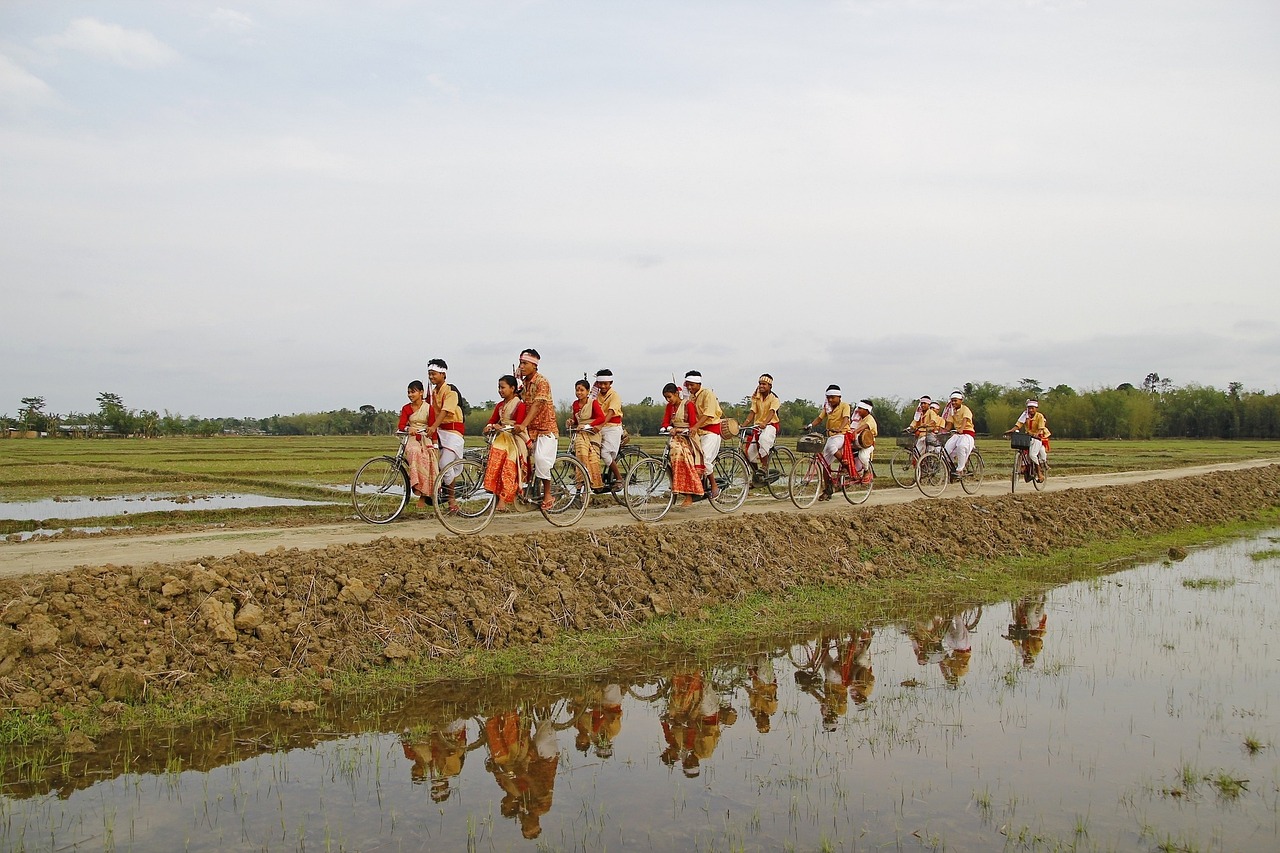Bihu is the most popular and vibrant festival of Assam, a state located in the northeastern part of India. It is a celebration of the changing seasons, the harvest and the fertility of the land. Bihu is celebrated thrice a year, in the months of Bohag (April), Kaati (October) and Maagh (January). Among these, the Bohag Bihu or Rongali Bihu is the most important and widely celebrated one.

Bohag Bihu is also known as Rongali Bihu, which means the festival of colors. It is celebrated in mid-April, when the winter season comes to an end, and the spring season begins. The festival is celebrated for seven days and is marked by a series of rituals, traditions, and cultural performances.

The Bihu celebrations start with the planting of the paddy saplings in the fields. This is known as Goru Bihu, where the cows are worshipped, and farmers pray for a good harvest. The next day is Manuh Bihu, which is celebrated by people dressing up in traditional clothes and visiting each other’s homes, exchanging greetings, and enjoying traditional food and drinks.This time its special as Bihu sets its name in guinness book of world record.(Link)
The third day is Gosain Bihu, where people offer prayers to the Gods and seek their blessings for a good harvest. The fourth day is Senehi Bihu, which is dedicated to friends, and people exchange gifts and visit each other’s homes. The fifth day is Maiki Bihu, which is celebrated by women, who clean and decorate their homes, prepare traditional delicacies, and offer prayers to the deities. The sixth day is Sankranti Bihu, which marks the beginning of the Assamese new year.
The final day of the Bihu celebrations is known as Bohagi Bidai, where people bid farewell to the festival and the season by performing traditional dance and music performances, such as Bihu Geet, Bihu Naas, and Husori.

Bihu is not only a festival of traditions and customs, but it is also an occasion for people to showcase their cultural heritage through various art forms, such as Bihu dance, Bihu songs, and other cultural performances. The Bihu dance is the most popular dance form of Assam, performed by both men and women, and is characterized by brisk movements and energetic steps. The dance is accompanied by traditional music, which is played using instruments such as the dhol, taal, and pepa.
Bihu is a time for joy, merriment, and celebration, and the festival is a reflection of the rich cultural heritage of Assam. It is a time for people to come together, forget their differences, and celebrate the beauty of life.
In conclusion, Bihu is not just a festival, but it is an experience that one must witness at least once in a lifetime. It is a festival that celebrates life, nature, and the joy of living. If you ever get the opportunity to visit Assam during the Bihu festival, make sure you immerse yourself in the festivities, the food, and the cultural performances that make this festival so unique and special.